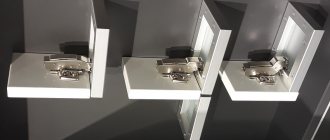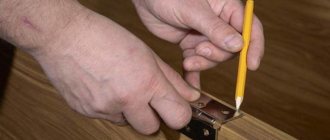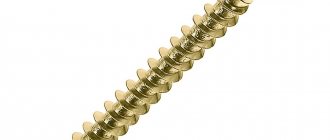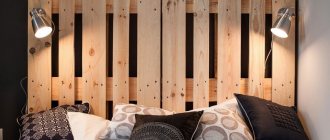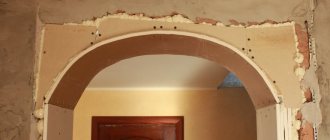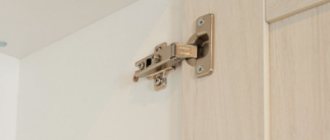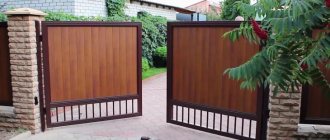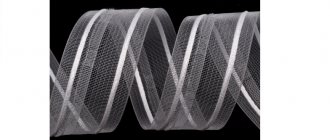Typically, searching for information on how to install hinges on a cabinet involves three situations. You have decided to either make the furniture yourself, or save on professional assembly when purchasing, say, a kitchen set. Or you want to replace old hinges that have failed. In the first case, you will also need to learn how to correctly calculate the required number of canopies for the facade and make markings and drilling for their installation. And also read how to choose furniture hinges. In the latter - to correct errors due to which the furniture hinges on the cabinet for some reason failed. Also, restore the sidewalls, if the fasteners are torn out, prepare the chipboard for re-installation. Let's first consider the general algorithm of how to install furniture hinges on a cabinet correctly with step-by-step instructions. And then - special cases.
Adjusting furniture hinges
Adjustment of the position of the facade in the horizontal plane, as well as the gaps between the facades, can be done using a screwdriver and an adjusting screw screwed into the hinge body. The adjusting screw has a groove in the lower part, which fits into a special groove in the mounting plate. In this case, during adjustment you need to slightly loosen the clamping screw.
To adjust the furniture façade in the vertical plane, you need to loosen the screws securing the mounting strip and by moving the strip up or down, adjust the height of the façade, then fix the strip by screwing in the screws that secure the strip.
Recently, innovative NEO hinges with 3D adjustment have appeared. It allows you to adjust the position of the front vertically, horizontally and overlay without loosening the screws, which greatly simplifies and speeds up the adjustment process. Even non-professionals can do it at home.
Installation of BOYARD furniture hinges
The durability of the loop largely depends on the accuracy of the filler holes. Exact hole matching can only be achieved using filler equipment.
It is impossible to use Euroscrews to install a hinge without first accurately drilling holes of the required diameter. The use of screws does not guarantee the perpendicularity of the hinge installation relative to the doors, which will lead to increased loads on the hinges (the main structural elements) and to their premature wear (door sagging, jamming when opening and closing, creaking). Taking these specific features into account, a range of BOYARD hinges was developed, with the ability to manufacture each hinge according to different additive standards for the rapid transition of furniture factories from hinges from other manufacturers to BOYARD hinges with economic benefits without loss of functionality.
Parameters and requirements for installing BOYARD hinges
Preparation for mounting the hinge cup
Calculation of the required number of loops for installation
The question of the number of hinges required for installation on one facade does not have a clear answer. The dimensions of the facade, as well as its weight, matter. In special cases, such as the use of glass facades, facades with aluminum profiles or unusually wide facades, a trial installation of the fastening hardware is necessary.
Façade designs in which the width is too large in relation to the height should be avoided.
In borderline cases, one additional loop should be planned. For hinges with a reduced cup diameter, you can use scheme 2, also not forgetting about an additional hinge for non-standard dimensions and weight of the facade.
Methods of fastening during installation and drilling for various types of fasteners
Attaching the mounting plate
Installing the hinge on the body
For Slide-on loop:
The upper part of the hinge body is inserted with a slot under the pre-mounted screw of the strike plate (1) and is fixed in the desired position.
For Key-hole loop:
The upper part of the hinge body with the hole is lowered onto the pre-mounted screw of the strike plate (1), inserted under it (2) with a translational movement and fixed in the desired position.
For Clip-on:
The upper part of the hinge body with quick-release fastening is inserted into the grooves of the pre-installed strike plate (1), fixed by pressing from above (2) and adjusted with a fixing screw.
For more accurate and accurate installation, calculations are used using hinge installation formulas, taking into account their design features and installation method.
Let's consider the principle of using calculation formulas using the example of a four-hinged standard hinge H301 for overhead A
, semi-overlay
B
and inset
C
doors:
Source
Online services
Blinds calculation service
The service will help you select and calculate the necessary components for blinds for the box according to the following criteria: type of installation of guides; type of blind travel; a series of lamellas; lamella color; sizes and number of boxes. As a result, you receive a specification that indicates the cost and list of required items. The specification also indicates how to cut the whips, the number and length of the segments.
Furniture handle selection service
The service will help you choose handles and see how they look on various facades in a finished kitchen in a classic or modern style. You can easily find the perfect combination for yourself. Quick and convenient selection of the desired handle model according to the main criteria: style, handle type, color, center distance. Using the image enlargement function, you will be able to examine the created version in great detail. You can immediately add the pen model you like to your cart.
Link secretory lifting mechanisms selection service
Indispensable in the selection of secretory lifting mechanisms Link from Italiana Ferramenta. The service will help you select the necessary accessories in a few simple steps. Select the dimensions and weight of the facade, the method of opening the facade, the type of hinges, and as a result you will receive the necessary articles of lifting mechanisms, as well as additive patterns on the facade and frame. The service is available both on the website and in the mobile application for Android, iOS, Windows and MAC operating systems.
Selection service for gas elevators K-12, Kraby, Compact
Developed by Italiana Ferramenta specialists, the service will help you choose the elevator you need. The service features simple step-by-step instructions. After choosing the parameters of the facade, the method of opening the facade, the type of hinges, you will receive the necessary article numbers for gas elevators, as well as additive patterns on the facade and frame. The service is available both on the website and in the mobile application for Android, iOS, Windows and MAC operating systems.
Source
Installing furniture hinges yourself
Many people, when purchasing interior items for an apartment or private home, assemble them themselves. This allows you to reduce costs for the services of a master. Having basic skills in handling tools, it is not difficult to assemble a kitchen set yourself. Manufacturers include step-by-step instructions with their products. The most difficult step is installing furniture hinges. The accuracy of their installation determines how tightly the kitchen cabinet doors will close and how easily they will open.
Furniture hinges are a necessary attribute for installing doors.
What to consider?
If suddenly, for some reason, a person needs to choose and buy hinges on his own, then this issue must be approached wisely. And you need to purchase only high-quality awnings, despite the fact that they all look the same on the display case. It is better to take those that are more expensive, but from a trusted manufacturer, than suspiciously cheap ones. Poor quality hinges can:
How to choose furniture hinges
Important! It is worth refusing to buy Chinese hinges. These structures are very unreliable, as a rule, they collapse very quickly and cease to function. Low-quality alloys are used for their production. And China supplies defective hinges to our markets in very large quantities.
By installing cheap hinges, you can save money only in extremely rare cases. Typically, such structures require early replacement, which means additional costs and a waste of time for dismantling the old loop and installing a new one. The miser pays twice - a saying that is very true when it comes to furniture hinges.
How to choose furniture hinges
Rules for installing furniture hinges
When assembling structures yourself, you must adhere to established rules and recommendations of specialists.
Before installing the hinges, be sure to mark the areas where they are attached. This is the main element of furniture fittings, which consists of a strip and a cup. Initially, these parts are attached separately to the frame of the bedside table and the door.
To do this, holes of the required diameter are drilled in the bases, and the parts are fixed with self-tapping screws or self-tapping screws. Next, connect the 2 pieces of furniture and adjust the position of the elements.
Leading manufacturers
If you have experience purchasing and installing hinges with special closers from different manufacturers, including those mentioned in this article, be sure to leave feedback. It will be interesting to find out whether these brands are really that good, or whether they also have their drawbacks.
To choose hinges with a closer function, you need to decide the purpose of their use. After all, there are different overlaps, sizes and corresponding configurations. The standard is the popular overhead type hinge with 4 hinges, the mounting holes of which fit a 35 mm bowl. Such hinges are universal and are actively used in the production of all kinds of furniture.
As for filling, gas will be the cheapest option, and silicone and oil fillers are the leaders in terms of reliability.
The following companies are currently considered leading brands:
- Boyard. She's just Boyard. Domestic accessories of high quality with a huge range and reasonable prices. A simple secret to success;
- GTV. Very durable, move smoothly and blend perfectly with different furniture. Adjustment and installation are extremely simple;
Types of fastening structures
Manufacturers make several types of hinges. Different models differ in appearance, design, material used for their manufacture, and method of fastening.
Overhead and internal
Fittings of this category do not require preliminary drilling of holes in the facade. Installation of overhead parts is carried out when inserting furniture hinges of a 4-hinged design is impossible, for example, due to the small thickness of the cabinet panels.
The disadvantage of such fasteners is the impossibility of adjusting them in planes.
Cupless (secret) hinges
Elements of this type of fittings are used quite rarely. They can often be found on domestically produced furniture. Cupless fastenings are used for interior door structures. They mainly perform decorative functions and are mounted on hinged lids of tables or secret doors.
Four-hinged for swing structures
This fitting option is used for furniture sets with hinged leaves.
4-hinged models consist of a bowl with an elbow and a strike plate. This makes it possible to regulate the horizontal and vertical arrangement of the panels relative to the frame of the cabinet (cabinet), and the tightness of the individual parts of the set.
Specific furniture hinges
This type of fastening is used for prefabricated structures with aluminum frames of different widths. Specific loops are overhead and internal. They are used for corner cabinets, the leaf of which opens to 45, 135 or 180 degrees.
Corner dish dryer: what are they, and are they convenient?
The presence of a closer allows for the most precise adjustment. It is performed in the vertical, frontal and horizontal plane.
Moreover, such hinges save even in situations where the floor itself is uneven. By adjusting, it is possible to compensate for this shortcoming, and as a result, the furniture with doors still looks perfectly level.
Thanks to everyone who is with us! Don't forget to subscribe and invite your friends to join us!
Today we will talk about the wonderful blum fittings.
What is so good about such accessories?
And the good thing about it is that it has a number of undeniable advantages compared to similar fittings from other manufacturers.
Blum hinges are fundamentally different from other hinges presented on the modern furniture market (in this article we will look at self-closing hinges, clip systems), and are more convenient and reliable.
So, let's look at the main differences, which are also the main advantages:
- Availability of a self-closer
- Clip system
- Adjustment principle
Let's now consider everything in order.
The built-in self-closing mechanism allows the facade, when closing, to stop a little, after which it closes softly and slowly.
Thus, you can simply push it (closing it), and it will smoothly close itself, without the characteristic, in such cases, impact on the box on which it is attached.
This is especially convenient on furniture that has facades with built-in glass.
When impacts occur during the closing of the facade, cracks may form on the glass (especially if it is large), which will lead to its complete destruction.
When using the accessories in question, this option is completely excluded.
Next, the presence of a clip system.
It allows you to remove and put on the loop without disturbing its adjustment. This is a very convenient (to say the least) feature.
Anyone who has ever encountered the installation of a kitchen unit probably knows how long it takes to install its facades, or rather, not the installation itself, but their adjustment.
Before installing the kitchen, all facades (or almost all) are removed. So, if they are hung on hinges of a conventional design, then in order to remove them, you must first de-adjust, that is, “release”, loosen. And of course, during subsequent hanging, the whole thing needs to be adjusted again.
And the clip system allows you to remove and put on an already configured loop (while maintaining its settings). It is very comfortable.
Hinges equipped with such a system are distinguished by peculiar “pedals” in their end part (from the side where the strike plate is attached).
Preparing to install hinges
Before assembling a furniture structure, you need to carefully prepare the installation site itself to avoid mistakes.
To do this, it is recommended to temporarily clear the room of excess furniture, other loose furnishings and household appliances. The base on which the product is planned to be assembled must be level. It must first be cleaned of dust and other contaminants.
After preparing the workplace, it is recommended to collect all consumables and tools.
If you plan to replace old canopies, then you first need to remove the doors and dismantle the old fittings.
Drawing conclusions
Based on everything previously discussed and said, some conclusions can be drawn.
Hinges that do not require insertion are morally and technically outdated solutions. Yes, they are sold in markets and stores. But the demand for them is becoming lower every day.
Such solutions are relevant mainly for repairing old furniture or for restoration. They can also be used in the manufacture of antique-style furniture. Although even here it is objectively better to replace the same piano hinges with modern analogues.
No self-respecting furniture maker will use them to produce their designs. What can we say about large factories and enterprises? The reliability of such fittings is questionable, the adjustment options are insignificant, plus most products take up a lot of space.
Subscribe, leave reviews, ask relevant questions and tell your friends about us!
Materials and tools used
Furniture hinge diagram
It is not an easy task to install fasteners on the doors and sides of cabinets. In this case, accuracy is important in order to use them without fear of their breakage. But you can still install the hinge fasteners on the cabinet yourself.
Tools that may be useful for installing hinges
At the initial stage, you need to select the material and prepare the tools that will be used in the work. In this case, the material used to make the cabinet is very important, since its strength will directly depend on this, and each type of wood has its own fastening, which will also need to be taken care of in advance. As a rule, fixation is used from below and from above. If the doors are massive, that is, they have a length of more than one meter and are heavy, then another hinge is installed in the middle. If the door weighs about 20 kg, then it will require 5 hinges.
When assembling furniture, no complex devices are used. To install the hinges you will need the usual tools. It will be attached directly to self-tapping screws (4*16 mm), for which we will need a screwdriver. To correctly measure the distance, you will need a tape measure, and to mark the measurements you will need to prepare a chalk or pencil. To ensure the door stands level, you must use a building level.
Purpose of awnings with closers
Such fittings are widely used in furniture production today. Thanks to the self-closing design, the furniture will retain its appearance during long-term use and will become less susceptible to any damage.
The hinged door closer can be installed on a variety of furniture
Table 2. Designs that are most often equipped with self-closing hinges
| Furniture type | Description |
| Bedroom | This could be: the facade of the dressing table; dresser; wardrobe for dresses. Sliding wardrobes and dressing rooms are equipped with sliding systems with a closer, and drawers are equipped with boxes. |
| Kitchen | This is furniture by type: table; closet Hinges provide convenient closure of any furniture body without making any serious effort. |
| For living room, children's room | Desks and various cabinets can be protected from damage. The child will be able to close the doors without slamming them. |
| Office | Often, hinges with a closer are equipped with: a computer desk; rack with doors. Such fittings will protect the furniture from any damage during regular use. |
| Trading | Often such fittings can be seen on glass display cases. Typically, glass cabinets and display cases are installed in commercial establishments to display goods. To install hinges to such furniture, additional frames made of aluminum profiles are used. It is not recommended to install hinges directly on the glass itself. You will have to make holes for the fittings, which is why the rather fragile material may lose its strength qualities. The metal frame will make the design more hopeful. |
Adjusting the location of the hinges does not cause difficulties even for a person who has never worked with furniture fittings
How to calculate the number of loops
It is difficult to say how many doors will be required for one swing door. It all depends on the recommendations of the furniture manufacturer and on the specific model. To calculate how many hinges are needed, you need to find out how much the door weighs and what its dimensions are.
The greater the height of the door, the more fastening points there should be. If there are few doors, then after some time the door and hinges will become deformed. It is recommended to avoid façades whose width is greater than their height.
An equally important characteristic is weight. If the swing door is made of laminated chipboard, and a mirror is fixed on its surface, then additional fasteners are simply necessary. Installation of a façade with the usual number of sashes will not withstand the load. Heavy weight can tear out or deform the fasteners. Additional hinges will add rigidity to the structure.
Read here: The smell of mold: TOP 20 ways to get rid of the smell of dampness and mold in the apartment
On the Internet there is a photo of a table on which diagrams and rules for high-quality installation of swing doors are calculated. It is used if there are no installation notes from the manufacturer.
Additive Tools
First you need to prepare the tools and materials for work. The additive does not require much technology. It is enough to have a machine for adding furniture hinges, which will allow you to perform installation quickly and efficiently.
Additive Tools:
- Construction square for determining the ideal perpendicular;
- Marker for marking;
- Punch punch – a metalworking tool for marking;
- Fostner cutter - for standard hinges its size is 35 mm, and for compact hinges a diameter of 26 mm is used;
- A metal drill with a size of 2 mm, but this is an optional requirement;
- Electric drill.
For the additive, a Fostner machine is used. It allows you to make small indentations when working with soft materials. When choosing such a drill, several nuances need to be taken into account. It is important that the central needle is well centered, without noticeable runout. You also need to pay attention to the incisors. They must be made of hard alloys, otherwise they will soon become dull.
An important selection criterion is the length of the central needle. If this parameter exceeds the norm, the tool will make a through hole. A small needle will move the cutter to the side when working manually. The needle on a new machine, as a rule, has to be ground down by half a millimeter.
Professional Fostner machines are equipped with a needle that is already reduced in size. In such equipment, accuracy is controlled by other elements. Before drilling, it is recommended to practice separately on material of similar thickness.
Calculation of the number of loops
Most furniture manufacturers specify the recommended number of fasteners in the assembly instructions. The calculations take into account the mass and parameters of the web.
For bedside tables made of laminated chipboard, on the doors of which a mirror is attached, additional fastening devices are provided, because the standard number of hanging elements may not withstand overload.
Based on the height of the canvas, the number of connection points is determined. If there are insufficient fasteners, the canvas will begin to sag over time.
Recommended number of hinges depending on the weight and height of the facade:
| Weight, kg | Height, cm | Number of fasteners |
| 4-5 | up to 50 | 2 |
| 6-9 | 50-100 | 2 |
| 10-13 | 100-150 | 3 |
| 14-18 | 150-200 | 4 |
| 19-22 | 200-250 | 5 |
It is also not recommended to use wide doors. If the width of the canvas is greater than the height, it is better to make 2 doors.
Peculiarities
The main difference between furniture hinges with a closer is the silent and smooth closing of the door leaves. Each product is equipped with an auxiliary device (closer or shock absorber), which allows you to fix the furniture facade to the body carefully, without slamming. The hinge body contains a spring filled with oil, gas or a viscous medium. Depending on the type of loop application, the fittings can be overhead, semi-overlay, or internal. Undoubted advantages of the design with a closer:
- silent and smooth closing of doors. A slight force is enough for the sash to close neatly. In this case, the door does not hit the furniture body;
- increasing the service life of furniture. It is impossible to slam a door equipped with a closer, which prevents mechanical damage to the door leaf;
- the fittings can withstand significant loads, so massive facades can be installed on furniture products. The closer is securely secured inside the hinge with screws or latches;
- The hinge mechanism can be adjusted to ensure a tight fit between the door and the body. No professional tools are required for adjustment;
- the filling of the cylinder with the spring is isolated by a fuse against the leakage of oil or working fluid, so if the hinge fails, the mixture does not fall on the furniture surface.
By adjusting the closer valves, the closing speed of furniture doors is increased or decreased. With a little force (push the door slightly enough), the door closes under its own weight. When the doors are closed, the liquid covering the spring flows into the closer capsule sleeve. The narrowing (expansion) of the fluid outflow channel causes the piston to move. Adjusting the valves sets the speed of movement of the piston element and controls the time for complete closing of the doors.
Marking
Installing furniture hinges with your own hands involves precise markings. If you make poor markings, you can get defects when opening the door. The process of marking for furniture hinges involves finding the center of the hole for them. You should retreat 7-12 cm from the edge of the facade. The number of hinges installed on the door may vary. But you need to maintain a certain distance between the canopies, equal to 50 cm. There is a certain dependence of the number of canopies on the door parameters.
| Facade weight, kg | Front length, cm | ||||
| Up to 50 | 50-100 | 100-150 | 150-200 | More than 200 | |
| Number of canopies | |||||
| 4-5 | 2 | ||||
| 6-9 | 2 | ||||
| 10-13 | 3 | ||||
| 14-18 | 5 | ||||
| Over 19 | 5 | ||||
When the number of canopies is determined, the central holes are marked relative to the width of the door. Moreover, the distance from the side of the door should be 2.1-2.2 cm. It should also be taken into account that the fastening should not lie on the location of the shelves.
Thus, having measured the required distance from the top and bottom of the door, a mark is made. Next, keeping the indentation relative to the width, the point of the future location is also marked. At the intersection of the measured marks, a notch should be made using a self-tapping screw or nail. If the facade height is more than 100 cm, marks must be made every 50 cm.
Work order
Marking is a very important step when installing hinges. It involves marking the door where the hole for the hinge bowl will be drilled. Moreover, it is important to first find the place where the center of the hole will be located. And here it is important to understand that the number of hinges directly depends on the size of the facade itself and its weight . But in any case, you need to retreat about 7-12 cm from the edge of the door. The distance between installed canopies should not be less than 50 cm, provided that several of them are attached.
Table. Required number of loops.
| Options | Number of loops, pcs. |
| Length up to 1 m, weight – no more than 9 kg | 2 |
| Length 1-1.5 m, weight – up to 15 kg | 3 |
| Length up to 2 m, weight – up to 20 kg | 4 |
| Length 2-2.5, weight no more than 20 kg | 5 |
After marking, you will need to make holes for the hinges. They are performed using a special drill. It is best to place the door on a flat, hard surface, this will make it easier to work with. The depth of the recess should be approximately 1.2-1.3 cm. If you make it deeper, there is a risk of damage to the outside of the facade. And you need to drill the hole clearly vertically.
Diagram: loop fitting dimensions
Important! The cutter must be sharp and preferably new.
After drilling, you can install the hinges, and you will also need to adjust them. Only in this case will the door hang straight.
Calculation of the number of furniture hinges for installation
The process of installing furniture hinges
Installation of fasteners is carried out in 4 steps:
The final and most difficult stage is the stage of adjusting the position of the canvas relative to the body of the cabinet or cabinet. If the furniture structure is not assembled correctly, the door leaves will begin to sag, which will lead to damage to the product.
Marking
In order to correctly install fasteners, you must first mark the connection points of individual parts of the furniture structure, otherwise the doors will not close well.
Recommended procedure:
For this procedure, you can use special templates, but drilling holes through them is not recommended: you can ruin the workpieces.
Drilling holes for hinges
After applying preliminary markings to the body of the furniture set and the canvas, recesses are made to fix the fastening elements. For this, a milling cutter, an electric drill and a set of drills of the required diameter are used.
Work order:
The work must be done carefully so as not to drill through the door. It is better to use a cutter: this will avoid damage to the decorative surface of the product. When using drills, there is a risk of chipping.
Attaching the hinge with your own hands
Next, the canopies are inserted into the prepared recesses and adjusted relative to the façade of the structure. The loops should fit snugly to the base. If these parts are placed unevenly, the canvas will begin to warp.
After adjusting the position of the structural elements, mark with a simple pencil the screw-in points for the fastening screws and attach the doors to the cabinet (cabinet).
It is recommended to hang doors on a smooth base. The side of the cabinet or bedside table on which the striker is fixed must be in a horizontal position. After connecting the pieces of furniture, the doors can already be adjusted in a vertical position.
Installation of the strike plate
Mounting strips are used with insert parts.
The standard thickness of a laminated chipboard façade is 1.6 cm. In this case, you need to retreat 5.4 cm from the edge of the product. This indicator consists of a constant value of 3.7 cm, a thickness of the canvas of 1.6 cm and an additional 0.1-0 .2 cm required for free movement and adjustment of fastening elements.
Hanging the façade on a hinge
This is the most difficult stage of furniture assembly. To facilitate installation work, it is recommended to lay the product body on the base so that the door is installed horizontally on the hinges.
First, the same markings are made on the inside of the cabinet or bedside table as on the canvas. In this case, you will need a cutter for furniture canopies.
Further sequence of actions:
At the final stage of furniture assembly, final adjustments to all components of the structure must be made.
Final adjustment
This is the final stage of installation work related to the installation of awnings on furniture sets. The final adjustment of the fastenings is carried out simultaneously in the horizontal and vertical planes, as well as in depth.
In the first case, the setting ensures free opening and closing of the sashes and prevents the appearance of gaps between individual parts of the structure. This setting option is often used when installing furniture in rooms with uneven floor and wall bases.
Vertical adjustment allows you to move the façade of the set if necessary. In this case, you need to tighten the special oval holes on the hanging structures.
Final adjustment is the last stage of installation work.
Depth adjustment is carried out using oval-shaped holes. This adjustment makes it possible to weaken or increase the pressure of the canvas to the body of the cabinet (cabinet).
How to calculate the dimensions of cabinet doors and drawers |
The front part requires utmost attention - after all, it is the quality and finishing of the doors that determines the design and “status” of the furniture. It is important not only to choose beautiful facades, but also to correctly calculate the dimensions of the cabinet doors, with uniform gaps for trouble-free opening. Errors in calculations are unacceptable, because most often it will not be possible to redo the facade, you will have to order it again. This means time and additional costs.
You can read how to calculate the fronts for a wardrobe here. This article will describe the process of calculating the sizes of swing doors and drawers for cabinet furniture (including kitchens).
Minimum and maximum cabinet door size
For a swing facade, the dimensions are strictly limited by the ability of the furniture hinges to support its weight. If the load is disproportionate, the cabinet doors will inevitably sag and adjusting the hinges will only give a temporary effect. The weight of the facades is capable of tearing fasteners out of the side walls. Therefore, at the design stage it is necessary to correlate the desired dimensions of the facades with the possible ones, according to the technical characteristics of furniture hinges.
Usually, when determining the number of hinges and the size of the cabinet doors, they rely on the following table:
The maximum permissible width of the facade is about 500-600 mm. For large sizes, it is worth considering the option with two swing doors or sliding systems.
The maximum permissible height (length) of the facade is about 2200 mm. If you make the door longer, it will be inconvenient to open it.
The minimum dimensions are limited only by considerations of aesthetics and functionality. If the cabinet body is narrower than 300 mm, the hinge mounting pads should be screwed in before assembling the body itself.
The principle of calculating the dimensions of swing doors and drawer fronts
According to the generally accepted standard, the gap between the sashes should be about 1.5-2 mm. To calculate the size of the front for the drawer, the same gaps are used. And not only so that it “looks” the same with the doors. But also because the loaded box sags a little, and the gap serves as a kind of “insurance” that the facades will not rustle against each other when they are pulled out.
For kitchen furniture, it is customary to subtract 4 mm from the dimensions of the niche. For example:
- For a cabinet with dimensions of 720x400 along the front part, the door will have dimensions of 716x396.
- For a cabinet with dimensions 720x600, two doors with dimensions 716x296 are installed.
But many people find that a gap of 4 mm is too much. Therefore, leave 3 mm, as for all other cabinet furniture. This is completely acceptable and not an error.
Nuance! When subtracting 3 mm for gaps, do not forget that you are calculating the final dimensions for the cabinet doors. If these are facades made of laminated chipboard and will then be edged with 2 mm thick PVC, then this should be taken into account. And subtract not 3 mm, but 7 (+2 mm will be added on each side, total 3+2+2). The same applies to façade options with aluminum ends and other types of edges.
To calculate the dimensions of drawer fronts, the same principle is used: subtract 1.5 mm from each side.
For example, in a cabinet 720x400 it is planned to install three drawers, two narrow and one wide. We divide the cabinet according to the height with the desired capacity of the drawers, let it be 180+180+360, as for kitchen furniture. We get the dimensions of the facades:
- 176x396 – 2 pcs.
- 356x396 – 1 pc.
If you decide to leave a 3 mm gap on all furniture:
- 177x397 – 2 pcs.
- 357x397 – 1 pc.
If the facades are designed for a 2 mm thick PVC edge:
- 173x393 – 2 pcs.
- 353x393 – 1 pc.
For the internal facades of the cabinet, the calculations will be similar. You should only subtract 3-4 mm from the internal dimensions of the niche.
How to calculate the dimensions of corner cabinet doors
The difficulty in calculating doors for a corner cabinet is determining the width of the sash. To do this, first calculate the width of the opening. Here you will have to remember school mathematics and the well-known formula - the square of the hypotenuse is equal to the sum of the squares of the length of the legs.
Let's take as an example a wall-mounted corner kitchen cabinet, standard dimensions 600x600 and side depth 300 mm.
With a sidewall thickness of 16 mm, the length of the legs will be (600-300-16) = 284 mm.
We calculate the opening in two steps: 284x284x2 = 161312, without the square root of 401.63. Round up to 401.
When calculating the width of the façade for a corner cabinet, one nuance is taken into account: due to the furniture hinge, the door will “move forward” a little and will not fit tightly into the opening. That is, it will come out on a large diagonal and the gaps will form on their own. Therefore, it is not worth subtracting 3 mm from the opening size, as for ordinary cabinets. In our case, we can round up to 400 mm.
But the height is calculated similarly to conventional cabinets. In our case, for a kitchen module with a height of 720 mm, it will be 717-716 mm (depending on how the rest of the kitchen facades were calculated, with a gap of 4 mm or 3 mm).
If the opening width is more than 500 mm, then there is a reason to install not one, but two sashes. When calculating the width, it is necessary to take into account the gap between the facades so that the doors do not interfere with opening to each other. That is, with an opening width of 600 mm for a corner cabinet, the width of each door should be about 298 mm.
Important nuance! This calculation method is only valid for facades whose thickness is comparable to the thickness of the cabinet body sides. For example, the body is 16 mm laminated chipboard, the facade is 16-18 mm thick laminated chipboard or MDF. If the facades are much more massive, 20-22 mm thick, then a gap is simply necessary to open them and it can be significant, up to 10 mm.
Dimensions of beveled end cabinet doors
Often a row of kitchen or wardrobe cabinets ends with an end module with a beveled door. Its width is calculated by analogy with the previous option with the only difference.
Installation stages
Installation of hinges on facades is carried out in 4 stages:
What modern furniture is made of, an overview of the main materials The most important and difficult stage is considered to be adjusting the position of the door relative to the furniture body. If the work is done incorrectly, the sash will quickly sag and the cabinet (or any other product) will fail.
Creating markup
To install furniture hinges correctly, you must initially make even markings that correspond to the parameters of the hardware plate. Otherwise, there will be problems with opening and closing doors. The marking of furniture hinges is done as follows:
Despite the fact that templates for furniture hinges are made of durable materials, they must be handled very carefully. It is strictly forbidden to drill through them, otherwise the service life will be reduced. To determine the number of loops needed, it is worth studying the recommendations presented in the table.
| Door weight, kg | Facade height, mm | Recommended number of loops |
| 4-5 | up to 500 | 2 |
| 6-9 | 500-1000 | 2 |
| 10-13 | 1000-1500 | 3 |
| 14-18 | 1500-2000 | 4 |
| 19-22 | 2000-2500 | 5 |
It’s easy to make a template for inserting furniture hinges yourself.
Hole preparation
The next step will be preparing the holes. To make the notches correctly, you need to accurately follow the markings already made. To carry out this operation, a drill with a special drill and a milling cutter are used. The holes are made like this:
How to correctly arrange furniture in a small room, advice from designers
When the main holes for the screws are ready, you can move on to the next stage. Inserting canopies in accordance with the markings and formed recesses is much easier and of better quality.
To avoid damaging the decorative surface of the furniture, you should use a cutter. If drilling is carried out only with drills, then chips may form at the edges of the holes.
Hinge Attachment
The hinges are attached in the following sequence:
After fixing the screws, you need to check the strength of the canopy. It is recommended to try to loosen the hinge in the cup and move it relative to the surface of the facade. If no changes are observed, then the fittings are secured well.
Hanging the door
The most difficult stage in this work is the installation of the door. To simplify the task, if possible, it is worth laying the furniture body so that the doors are attached to the hinges in a horizontal position. Algorithm for installing doors:
Advantages of individual furniture design, stages of work
Hanging the door is not the final stage of work. Even after the initial adjustment, additional measures must be taken to align the position of all components.
detailed instructions
Step 1. You need to indent approximately 7-12 cm from the upper and lower edges of the door. In this case, the indentation in the instructions is made at a distance of 8 cm. You need to draw two lines strictly perpendicular to the edge of the door.
An indentation of 8 cm is made
Lines are drawn perpendicular to the edge
Step 2. Next, from the edge of the door to the center of the place where the hole will be drilled, you need to make an indent of 22 mm. This is the standard distance. And you also need to draw lines through the marked point, perpendicular to those drawn earlier.
Bottom space - 2.2 cm
Perpendicular lines are drawn
Step 3. Next you need to take a special drill with a standard diameter of 35 mm.
Take a drill with a diameter of 35 mm
Step 4. To make drilling easier and the drill clearly positioned, you need to make small notches using an awl at the intersections of the lines on the markings.
Using an awl to make indentations
Step 5. Now you can drill the holes. You can do this with a drill, or you can use a special router.
You can start drilling holes
Step 6. Once the holes have been drilled, you can try on the hinge bowl, and also, by aligning the holes for the screws on the ears of the bowl along the line drawn earlier, mark where the drilling will be done, but with a thin drill. Moreover, the points will not be on the line itself, but slightly to the side, with the ears aligned along the line.
Fitting the hinge bowl
Markings have been applied for future holes
Step 7. Now, using an awl, you need to make notches at the designated points to position the drill.
Notches are made to position the drill
Step 8. Next you need to drill holes for self-tapping screws measuring 4x16 mm.
Step 9. It is necessary to attach the canopy to the door again, placing the bowl in the hole, and screw it to the facade with self-tapping screws.
Step 10. Now you can attach the door to the cabinet wall. This is done like this - first you need to attach the door to the wall, choosing the position in which it should stand.
Now you can attach the door
Step 11. When applying markings, you need to ensure that the upper hinge screw, which will be attached to the wall, is in a position close to the door itself.
You need to mark carefully
Step 12. Next, it is important, after taking simple measurements, to set aside 17 mm from the center line on which this part of the canopy lay.
From the center line you need to set aside 17 mm
Step 13. After this, you need to attach the door again and make marks with a marker through the holes in the hinge, aligning them with the lines drawn at a distance of 17 mm.
Markers are used to make marks through the holes in the loop.
Step 14. Now you need to drill holes for Euro screws with a drill.
Holes for Euroscrews are drilled
Step 15. Next you need to screw part of the loop to the wall.
Part of the loop is screwed to the wall
Step 16. Then you can attach the door to the wall. It is important to get the front part of the hinge attached to the door onto the screw located on the part of the hinge that is fixed to the wall. Also, under the hinge that is fixed to the door, there is a screw with a “heel”, which is important to get into the groove located on the other side of the part of the hinge that is fixed to the wall.
This part needs to get onto the screw
The door is attached to the wall
It is important to do everything according to the instructions
Another photo of the process
Step 17. To prevent the hinges from coming apart, the outermost screws need to be tightened a little. There is no need to wrap them all the way yet.
The outer screws are tightened a little
Step 18. Now you need to adjust the door. To begin with, you should move it away from the cabinet wall by about 1-2 mm; you do not need to fix it tightly to it. Once the gap has been maintained, the screws can be tightened.
Step 19. There is another screw that will help you move the door left or right if necessary. In this case, there was no need to adjust it.
This screw in our example did not need adjustment
Video - Marking and drilling
Is the installation process for door hinges different?
Manufacturers offer more than 10 types of attachments. There are simple canopies and models of more complex designs. They differ in the installation method.
For example, hinged hinges are most often used for wooden kitchen cabinet doors. Before correctly installing furniture hinges, you need to mark the location of the fastening elements. The placement pattern is standard - you need to retreat 8-15 cm from each edge of the leaf. The distance between individual hinges depends on the height of the door. Next, markings are carried out in the selected areas. The canopies are applied to the base and traced along the contour with a simple pencil, and points for drilling holes for self-tapping screws are marked.
Glass sheets of kitchen sets are hung on the upper cabinets of the furniture. The material is quite fragile, so it requires a special approach to the selection and installation of fasteners.
In this case, the fittings include several required elements:
The method of fixing hinges on glass doors is slightly different from installing fasteners on wooden panels. The drawing of the location of parts is done in a similar way.
In wooden structures, holes are pre-drilled with an electric drill for attaching canopies. Next, screw in the screws using a screwdriver.
The hinges are attached to the glass panels using special clamps. The sash is placed in a hinge. In this case, rubber gaskets are additionally installed between these elements to prevent damage to the glass. Bolts are used to secure parts.
Kitchen cabinet hinges
The opening mechanism of x cabinets is the most vulnerable point in the design of kitchen furniture. Therefore, choosing reliable and durable hinges is no less important than choosing other high-quality materials for the kitchen.
What kind of hinges are needed for kitchen cabinets? The choice depends on their purpose, method of fastening and design.
A furniture hinge is attached to the body and door, which serves as a means of connecting two structural parts and as a mechanism for free opening/closing at a specific angle.
You can see the types discussed below in an accessible, understandable and visual way in the video review:
Installation process
Correct marking is the key to success
Marking for furniture hinges is one of the main installation steps, which determines the ease of use of furniture and the service life of the entire structure. For this reason, it is important to correctly apply the markings along which the hinges will subsequently be installed. To do this, follow these steps:
After marking, be sure to carefully check its correctness again, make sure that the distance between the hinges and the edges of the door is exactly the same.
Marked area for milling on the cabinet door
Drilling holes for hinges
You've probably noticed more than once that furniture hinges are installed not on the surface of the door, but in special recesses. You will also have to make a hole for the furniture hinges in order to install them correctly. For this, a drill with a cutter is used. The procedure is as follows:
Do not overdo it with the depth of drilling holes - too much depth can negatively affect the appearance of the outside of the door, and also subsequently lead to deformation of the structure and loosening of furniture hinges.
Hole for hinge cut with a milling cutter
Putting the hinges in place
After preparing the holes, you can begin directly installing furniture hinges with your own hands. To do this correctly, follow the instructions below:
In order to fix the hinges on the door as evenly as possible, you can use special templates that help to correctly mark the places for drilling holes. If you trust your eye, you can do without the help of such templates.
Dependence of door dimensions and required number of hinges
Bedspread for a corner sofa: beautiful ideas for protecting furniture
The key difference between this hardware and its analogues is considered to be silent and smooth operation. This follows from the operating principle and design of the mechanism. There is an additional device inside it. It is also a shock absorber or a special closer. Due to this design, the doors on the furniture façade close neatly and there is no characteristic bang or impact.
There is a spring inside the housing. And this spring has the appropriate filling. Depending on it, the mechanism can be gas, oil or viscous silicone medium.
Based on the peculiarities of the application of this fittings, such hinges are structurally:
- invoices;
- semi-overhead;
- loose-leaf;
- internal type of execution.
They are successfully used for standard and corner cabinets. The same 45-degree corner hinges are great for organizing kitchen furniture and are used for corner cabinets.
The fittings are capable of opening doors at different angles, including 180 degrees and a full 270 degrees. Here a lot depends on the design of the furniture itself and the need to open the cabinets wide.
The operating principle itself is based on the following. The spring is covered with a special liquid, which, when closed, gradually flows into the sleeve located in the capsule of the closer itself. Due to narrowing or expansion (opening and closing), the outflow of fluid provokes the movement of the piston. The valve adjustment determines how quickly the door closes completely.
Advantages
When planning to use such hinges for a false panel or for a kitchen, you are making the right decision. It's easy to explain. By purchasing products from brands like JET or GTV, you get a number of objective advantages. Namely:
